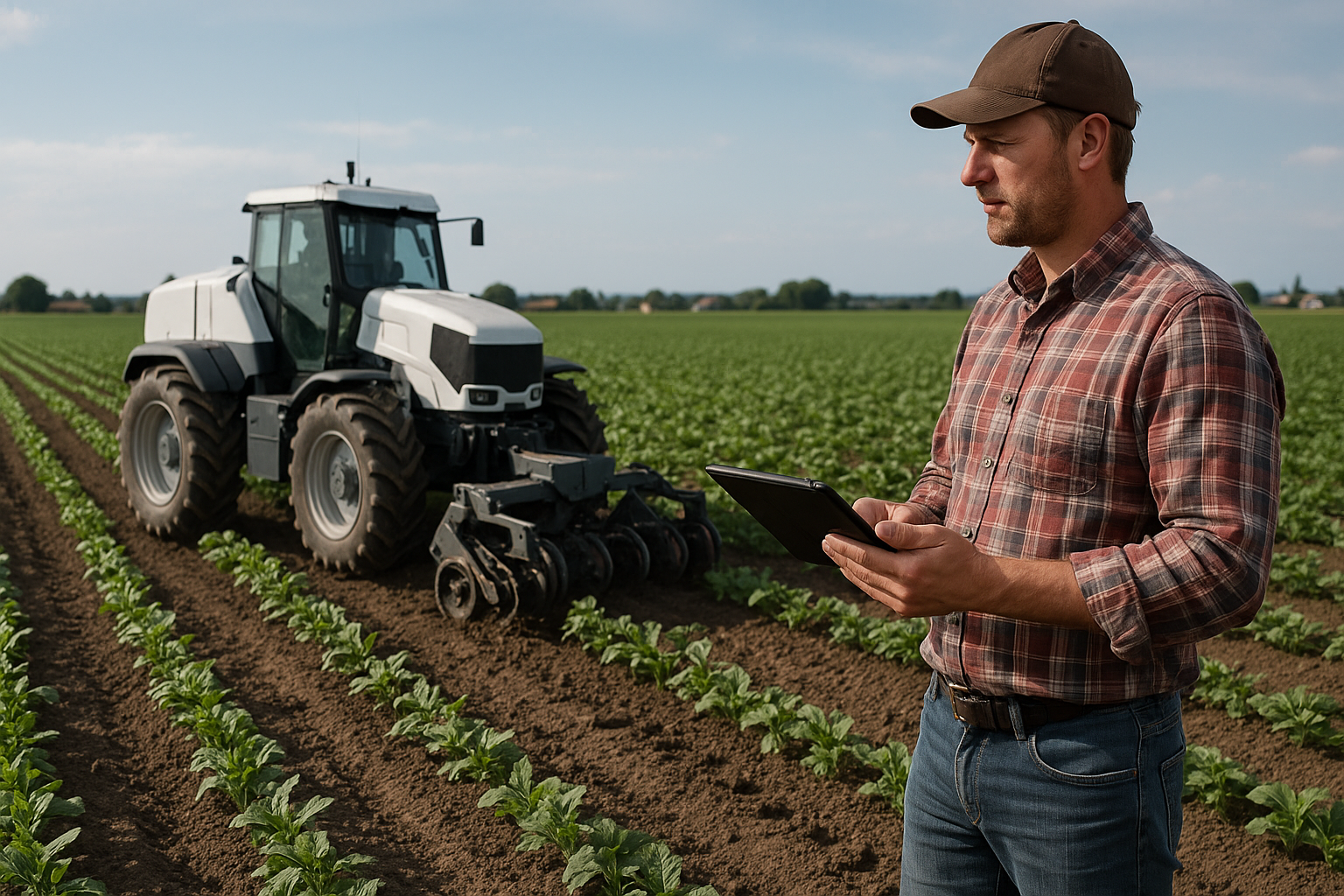Agricultural technology fails to meet farmers’ real-world needs

The rise of agricultural technology promises to transform food production. Yet, behind the hype, farmers on the ground face a different reality: one where expensive, complex, and narrowly focused tools often fail to meet their needs.
A new study published in Agriculture, titled "Technology Advancements and the Needs of Farmers: Mapping Gaps and Opportunities in Row Crop Farming", sheds light on this growing disconnect. The study reveals where agricultural technologies align with farmers’ expectations—and where they fall short in delivering practical solutions.
How do farmers’ needs compare to current robotic solutions?
The study identifies a persistent mismatch between farmers’ expectations and the design priorities of robotic developers. Through a comprehensive review of 184 research articles, 19 surveys, and 82 commercial robotic solutions, alongside interviews with nine farmers, the authors paint a detailed picture of the evolving agricultural technology landscape.
Farmers consistently highlighted three key needs: affordability, adaptability, and ease of use. Most commercial robots are cost-prohibitive, require specialized training, and lack flexibility to operate under varying farm conditions. Small and medium-sized farms, in particular, struggle to justify investments in robots that perform only a single task or demand extensive maintenance.
In contrast, farmers seek multi-functional solutions capable of handling diverse conditions, robots that can monitor crops, assess soil health, and adjust to changing climate scenarios. While advanced prototypes exist in research labs, few have transitioned into commercially viable products accessible to the broader farming community. This gap underscores why adoption rates remain low despite significant technological progress.
What are the limitations of current agricultural robotics?
The study reports that commercial robotic systems excel in precision and perception but fall short in autonomy, scalability, and cognitive decision-making. Robots can navigate rows, detect weeds, or assist in harvesting, but they often rely on human oversight for decision-making and intervention. For farmers managing large-scale operations, this limitation diminishes the promised labor-saving benefits.
Moreover, current solutions tend to be task-specific, designed for narrow applications such as spraying, weeding, or seeding. This narrow focus limits their utility across an entire growing season. Farmers interviewed in the study stressed the importance of modular designs - robots that can switch between tasks or integrate seamlessly with other equipment.
The research also highlights a lack of climate resilience in existing technologies. Agricultural robots frequently struggle in unpredictable weather or challenging terrains, reducing their effectiveness in regions with variable conditions. Additionally, technical support and after-sales services remain inadequate, further discouraging adoption among farmers who cannot afford downtime during critical planting or harvesting windows.
From the academic side, many innovations are promising but remain confined to controlled environments or pilot projects. The gap between research prototypes and market-ready products is widening, as academic studies often focus on solving isolated technical challenges without addressing the broader operational context of farms.
What opportunities can close the gap between technology and farming needs?
Despite the shortcomings, the study outlines clear opportunities to align robotics with farmers’ requirements. The authors suggest co-creation as a vital strategy, engaging farmers directly in the development process to ensure technologies reflect field realities rather than theoretical models. This approach can lead to more practical, user-driven designs that address actual pain points.
The research also points to Robot-as-a-Service (RaaS) as a promising business model. Instead of forcing farmers to make expensive upfront purchases, RaaS allows them to lease or pay per use, lowering financial barriers and enabling broader adoption. This model has already gained traction in other sectors and could transform agricultural robotics if supported by strong service networks.
Artificial intelligence (AI) integration is another key area for improvement. AI-driven decision-making could enable robots to operate autonomously under dynamic conditions, optimizing planting, irrigation, and pest control in real time. Combining robotics with AI-powered analytics offers the potential for fully autonomous farming systems that enhance productivity while reducing resource waste.
The study calls for strong regulatory and support frameworks. Governments and agricultural organizations must invest in training, infrastructure, and subsidies to accelerate adoption. Clear regulations regarding safety, data use, and environmental impact would further encourage farmers to embrace advanced technologies without fear of hidden risks.
The findings make it clear - the future of farming depends not just on how advanced technology becomes, but on how well it serves the people working the fields.
- READ MORE ON:
- agricultural technology adoption
- farmers’ needs and agricultural innovation
- modern agriculture challenges
- agri-tech solutions and farmer expectations
- future of farming technologies
- digital agriculture and sustainability
- climate-resilient agricultural technologies
- agriculture robotics and AI integration
- FIRST PUBLISHED IN:
- Devdiscourse










